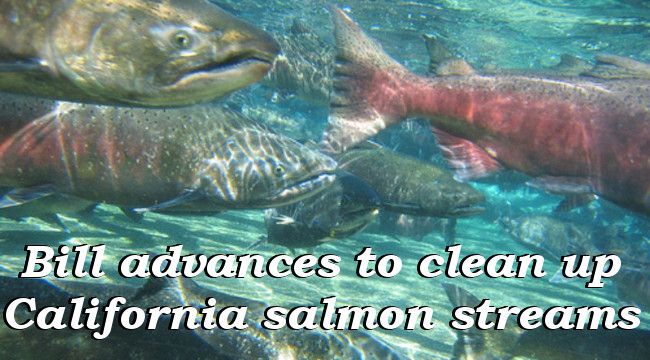| Take Action |
| Donate |
Massive erosion from hillsides draining into fish-bearing streams has long been a byproduct of industrial logging in California. But this major pollution and loss of precious soils would be checked by a proposed new law, Senate Bill 69, now working its way toward passage in the legislature.
Write to your lawmakers today in support of S.B. 69, to save forest soils, waters, and salmon!
Since the 1850s in California the majority of rivers and streams that hosted thriving populations of salmon and trout have suffered extreme degradation from soil erosion (sedimentation) caused by logging. This wasting buries in mud the clean gravels on which fish need to lay their eggs.
Removal of forest canopy has heated the waters to temperatures the salmonids are not adapted to survive. Hotter, siltier water in turn contains less oxygen and more pathogens toxic to fish and the invertebrates that support them, as well as birds and other forest creatures.
Senate Bill 69 would require that an erosion control plan be developed for any logging taking place on lands adjacent to or including streams where listed salmon are now or were historically found. This would apply to lands listed by the U.S. EPA as impaired by sediment pollution, which is the majority of California's forestland waterways.
This important legislation would go further, requiring the State Board of Forestry to ensure that any new logging rules adopted provide additional protections for listed salmon species.
Fledgling and potentially highly successful efforts in recent years to bring back California's salmon would benefit greatly from these long-overdue new protections. Please urge your legislators to support S.B. 69!
| Take Action |

Paul Hughes
Executive Director
Forests Forever
| Your contribution today will help California's forests thrive! | |
|
RESOURCES →
- Read the full Ocean Resiliency Act of 2019 here and check on its history, status, and more.
- Forests Forever for years has advocated for restrictions on logging on slopes of 15 degrees (27 percent) or greater. Read our white paper here.
